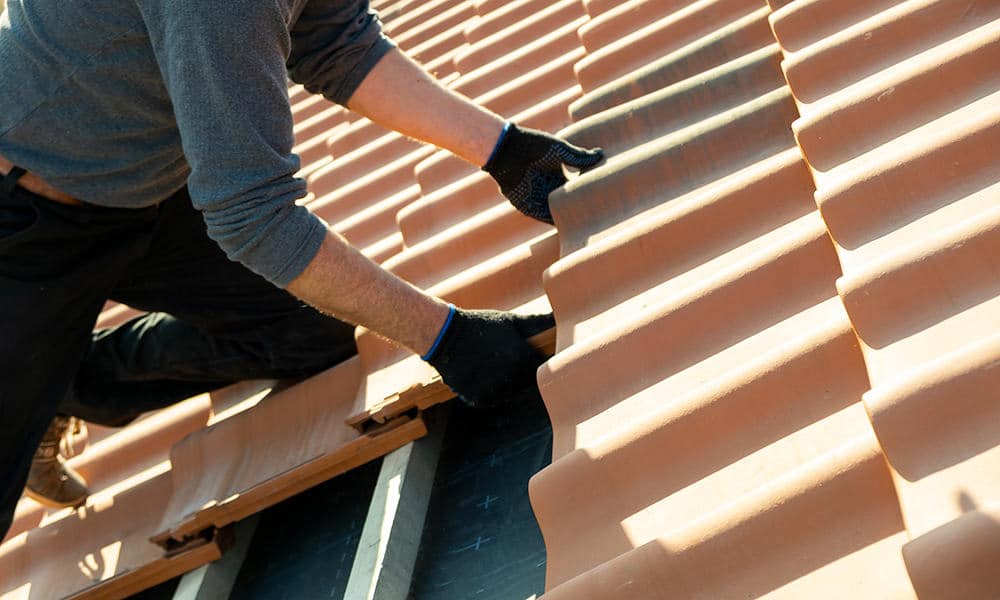What Is Asbestos and Why Was It Used?
Asbestos is a naturally occurring mineral composed of thin, fibrous crystals. For decades, it was widely used in the HVAC industry due to its durability, heat resistance, and insulating properties. Manufacturers often incorporated asbestos into ductwork, insulation, and sealing materials, as it provided a cost-effective solution for improving system efficiency and fire safety. However, asbestos poses significant health risks when its fibers become airborne, making its once widespread use a serious concern today.
Common Locations of Asbestos in HVAC Systems
In older HVAC systems, asbestos can be found in several key areas:
- Duct connectors and joints, where asbestos tape was used to seal gaps.
- Insulation around pipes and heat vents.
- Liners and wraps inside air conditioning units and furnaces.
- Cement or millboard used in structural components.
These materials, while initially stable, may deteriorate over time, increasing the risk of asbestos exposure. Homeowners should be especially cautious when handling or inspecting older HVAC systems.
Health Risks Associated with Asbestos Exposure
Exposure to asbestos fibers can lead to severe health issues, even decades after initial contact. Inhaled fibers can become lodged in the lungs, causing diseases such as:
- Mesothelioma – a rare but aggressive cancer affecting the lining of the lungs or abdomen.
- Asbestosis – a chronic lung condition characterized by scarring and reduced respiratory function.
- Lung Cancer – directly linked to prolonged asbestos exposure.
It’s important to note that no level of asbestos exposure is considered safe. Symptoms of asbestos-related illnesses, such as persistent cough, shortness of breath, and chest pain, often take years to manifest. Regular maintenance and professional inspections of older HVAC systems are critical to minimizing these risks.
Historical Use of Asbestos in HVAC Systems
Why Asbestos Was Popular in HVAC Manufacturing
Back in the day, asbestos was practically a go-to material for HVAC systems. Its heat resistance, durability, and insulating properties made it a natural fit for components like ducts, pipe insulation, and even tape. Manufacturers relied on asbestos because it was cheap and could handle extreme conditions without breaking down. Unfortunately, they didn’t fully understand—or chose to overlook—how dangerous it could be to human health.
Regulations and Bans on Asbestos Use
The tide started to turn in the late 20th century when scientists and health experts began linking asbestos exposure to serious illnesses like mesothelioma and lung cancer. By 1979, the U.S. imposed nationwide regulations to limit asbestos use, but it wasn’t a clean break. Some industries fought back, and a full ban didn’t stick. As a result, asbestos-containing materials can still be found in older buildings and HVAC systems, especially those installed before the 1980s.
Legacy Issues in Older HVAC Systems
Even though asbestos is mostly out of modern HVAC manufacturing, it’s still lurking in older systems. If your home or building has an HVAC system from before the asbestos regulations, there’s a chance it contains asbestos materials. Common spots include duct connectors, furnace linings, and pipe insulation. Over time, these materials can deteriorate, releasing harmful fibers into the air. That’s why it’s crucial to know the history of your HVAC system and take steps to address any potential risks.
Identifying Asbestos in Your HVAC System
Signs of Asbestos in HVAC Components
Spotting asbestos in your HVAC system isn’t always easy, but there are some telltale signs to watch for. White, papery material wrapped around ducts is a common indicator, especially in older homes. Crumbling or frayed pipe wraps and unusual dust near the system might also point to asbestos. Check areas like ductwork connectors, heat vents, and even around the furnace. If your home was built before the 1980s, it’s a good idea to be extra cautious. When in doubt, assume the material contains asbestos and avoid disturbing it.
Testing for Asbestos in HVAC Systems
The only way to confirm the presence of asbestos is through professional testing. A licensed asbestos expert can take samples safely and send them to a lab for analysis. Never attempt to collect samples yourself, as this can release harmful fibers into the air. If you suspect asbestos, turn off your HVAC system immediately to prevent further circulation of airborne particles. Until a professional can inspect, avoid the area to minimize exposure.
Common Materials Containing Asbestos
Asbestos was widely used in HVAC systems for its fire-resistant properties. Some materials you might encounter include:
- Asbestos paper and duct tape
- Duct wrap and insulation
- Millboard and furnace cement
- Liners and HVAC fabric
These materials were often chosen for their durability but can become hazardous as they age and deteriorate. If you notice any of these materials in your system, contact a professional to evaluate the risk. Visible damage, such as crumbling tiles or frayed wraps, is a sign that immediate action may be necessary. Learn more about visible damage and asbestos risks.
Health Implications of Asbestos in HVAC Systems
Respiratory Diseases Linked to Asbestos
Asbestos exposure is directly tied to several serious respiratory conditions. Inhaling asbestos fibers can lead to irreversible damage in the lungs, causing diseases like asbestosis, lung cancer, and malignant mesothelioma. These fibers, once lodged in lung tissue, create scarring and inflammation that worsen over time. For instance, malignant mesothelioma is a rare but aggressive cancer that primarily affects the lining of the lungs or abdomen, often linked to asbestos exposure.
Long-Term Health Risks of Exposure
The health risks of asbestos exposure often manifest years, even decades, after the initial contact. This latency period makes early detection nearly impossible. Individuals exposed to asbestos may also face an increased risk of developing other cancers, such as ovarian or laryngeal cancer. In fact, the EPA’s ban on chrysotile asbestos in 2024 highlights the ongoing need to eliminate this hazardous material to protect public health.
Symptoms of Asbestos-Related Illnesses
Symptoms of asbestos-related diseases can be subtle at first but grow more severe over time. Common symptoms include:
- Persistent dry cough
- Shortness of breath
- Chest or abdominal pain
- Unexplained weight loss
- Fatigue or fever
If you or someone in your household experiences these symptoms and has a history of asbestos exposure, it’s crucial to consult a medical professional for evaluation.
How Asbestos Becomes Airborne in HVAC Systems
Deterioration of Asbestos Materials
Over time, materials containing asbestos can break down due to wear, moisture, or age. When this happens, tiny asbestos fibers can loosen and become part of the air. This is especially risky in HVAC systems, where airflow can spread these fibers throughout a home or building. For example, old asbestos tape used on ductwork connectors can crumble, releasing microscopic fibers into the ducts.
Impact of HVAC Maintenance on Asbestos
Routine maintenance activities, like cleaning ducts or replacing filters, can disturb asbestos-containing components. Tasks such as sanding or cutting into old ductwork can release fibers that were previously contained. Even opening panels or accessing compartments can stir up settled asbestos dust, creating a hazard for technicians and occupants alike. Electricians working on old insulated wiring face similar risks when disturbing materials that contain asbestos.
Risks of Airborne Asbestos Fibers
Once asbestos fibers are airborne, they are easily inhaled, posing significant health risks. These fibers are too small to see and can remain suspended in the air for long periods. If they enter the ducts, the HVAC system can distribute them throughout the property, exposing everyone inside. Proper management, such as encapsulation, can prevent this and reduce the dangers associated with airborne asbestos.
Steps to Protect Your Family from Asbestos in HVAC Systems
When to Call a Professional
If you suspect asbestos in your HVAC system, the first step is to leave it undisturbed. Asbestos becomes dangerous when it’s damaged or disturbed, releasing tiny fibers into the air. Hiring a licensed asbestos professional is the safest choice. These experts can inspect, test, and determine the best course of action for your home. Remember, only a laboratory test can confirm the presence of asbestos.
Temporary Safety Measures
While waiting for professional help, there are a few things you can do to minimize exposure:
- Turn off your HVAC system to stop air circulation.
- Seal off vents and air ducts with plastic sheeting or tape.
- Avoid entering the area where asbestos is suspected.
These steps won’t eliminate the risk entirely but can help reduce further contamination until experts arrive.
Importance of Licensed Asbestos Abatement
When it comes to removing or managing asbestos, it’s essential to work with professionals who are certified and trained in asbestos abatement. Licensed contractors follow strict safety protocols, including wearing proper protective gear and using specialized equipment to handle and dispose of asbestos waste. Improper removal can worsen the situation, spreading fibers throughout your home. Always verify the credentials of the contractor and request a detailed work plan before starting any abatement process.
Legal and Financial Aspects of Asbestos in HVAC Systems
Liability of Manufacturers and Contractors
The use of asbestos in HVAC systems has left a lasting impact on homeowners and workers alike. Manufacturers and contractors who knowingly used asbestos in HVAC components may bear legal responsibility for health issues caused by exposure. Courts have often held these parties accountable, especially in cases where they failed to warn consumers or workers about the risks. Homeowners can also face liability concerns if they attempt DIY asbestos removal and inadvertently expose others. Consulting licensed professionals is crucial to avoid legal repercussions.
Compensation for Asbestos-Related Illnesses
For individuals diagnosed with asbestos-related diseases, such as mesothelioma or asbestosis, financial compensation may be available. Victims can file lawsuits against manufacturers or seek compensation through asbestos trust funds. These funds were established by companies that filed for bankruptcy due to asbestos liabilities. Compensation can cover:
- Medical expenses, including treatments and surgeries.
- Lost wages due to inability to work.
- Pain and suffering caused by the illness.
It’s important to act quickly, as statutes of limitations may limit the time frame for filing claims.
Legal Requirements for Asbestos Removal
When dealing with asbestos in HVAC systems, strict legal guidelines must be followed. Federal and state laws mandate that only licensed asbestos abatement professionals handle removal or repairs. This ensures that harmful fibers are not released into the air, protecting both workers and residents. Homeowners should verify that contractors comply with regulations and use proper safety measures. Additionally, replacing or repairing damaged asbestos-insulated pipes or HVAC systems requires adherence to asbestos safety protocols to minimize exposure risks.
Preventing Asbestos Exposure During HVAC Maintenance
Safety Protocols for HVAC Technicians
Working on HVAC systems in older buildings can expose technicians to asbestos, especially when handling ductwork, insulation, or furnace components. To minimize risks, technicians must follow strict safety protocols. These include shutting off HVAC units to prevent the spread of airborne fibers, sealing off work areas with plastic sheeting, and using wet methods to clean up debris. Additionally, technicians should avoid disturbing materials that might contain asbestos unless absolutely necessary.
Importance of Proper Training
Technicians need thorough training to recognize asbestos-containing materials and handle them safely. Training programs should cover the identification of common asbestos products, such as duct tape, insulation, and furnace linings, as well as the correct procedures for working in contaminated areas. Properly trained technicians are better equipped to protect themselves and others from exposure.
Role of Protective Equipment
Personal protective equipment (PPE) is essential when working near asbestos. This includes respirators with HEPA filters, disposable coveralls, gloves, and safety goggles. Using PPE correctly not only protects the technician but also reduces the risk of contaminating other areas. After completing maintenance, all disposable gear should be sealed in labeled asbestos waste bags for safe disposal.
Modern Alternatives to Asbestos in HVAC Systems
Asbestos-Free Insulation Materials
In today’s HVAC systems, manufacturers have moved away from asbestos-based materials, opting instead for safer, more sustainable options. Fiberglass insulation, for instance, has become a popular choice due to its excellent thermal properties and non-toxic nature. Other materials like mineral wool and cellulose are also commonly used, offering similar benefits without the health risks associated with asbestos. For those looking to enhance indoor air quality, these modern materials are a significant improvement over older, hazardous components.
Advancements in HVAC Safety Standards
The HVAC industry has come a long way in prioritizing safety. Modern safety standards now mandate the use of non-toxic materials in all new systems. These regulations ensure that harmful substances, like asbestos, are no longer part of the manufacturing process. Additionally, advancements in technology have led to the development of more efficient systems that not only perform better but also contribute to a healthier living environment.
Benefits of Upgrading Older Systems
If your home or building still relies on an outdated HVAC system, it might be time to consider an upgrade. Replacing older units with modern, asbestos-free systems can significantly improve both safety and efficiency. New systems are designed to minimize energy consumption, reduce maintenance costs, and eliminate the risks associated with deteriorating asbestos materials. Plus, upgrading can address issues like wet or moldy insulation, which can further compromise air quality and system performance.
The Role of Air Quality Testing in Detecting Asbestos
How Air Quality Tests Work
Air quality testing is a reliable method for detecting asbestos fibers in your environment, especially when they are too small to be seen with the naked eye. Professionals often utilize advanced techniques such as Transmission Electron Microscopy (TEM) to identify even the tiniest asbestos particles suspended in the air. This process involves collecting air samples, which can take several hours to ensure thoroughness. No level of asbestos exposure is considered safe, so testing is a critical step in protecting human health.
When to Conduct Air Quality Testing
There are specific situations where air quality testing becomes essential:
- Suspected asbestos presence during home renovations or HVAC maintenance.
- Living in a property built before the 1980s, as older buildings often used asbestos materials.
- Experiencing symptoms like persistent coughing or shortness of breath, which could be linked to asbestos exposure.
If you suspect asbestos contamination, it’s advisable to consult a professional team for a comprehensive property survey. A professional team can not only test for asbestos but also provide a detailed report and actionable steps for managing it.
Interpreting Test Results for Asbestos
Once the air quality test is complete, the results will indicate whether asbestos fibers are present and at what concentration. If the test comes back positive, immediate action is required. Even if the results are negative but asbestos-containing materials are visible, you should still seek expert advice. For those looking to test independently, an asbestos testing kit can be a convenient option, as it includes all necessary tools and lab analysis. However, professional testing remains the most reliable approach for accurate results.
The Future of HVAC Systems Without Asbestos
Trends in Asbestos-Free HVAC Design
The HVAC industry is moving towards safer, more sustainable designs, leaving asbestos behind. Modern systems are now built with materials that are not only free of asbestos but also more efficient and environmentally friendly. Manufacturers are focusing on innovations that prioritize both safety and performance, such as advanced composites and non-toxic insulation. These changes reflect a growing awareness of health risks and a commitment to safer living environments.
Impact of Regulations on HVAC Manufacturing
Government regulations have played a big role in shaping the future of HVAC systems. Strict bans and guidelines on asbestos use have forced manufacturers to rethink their processes. Compliance with these rules has led to the development of safer alternatives. For example, many companies now use fiberglass or mineral wool for insulation—materials that provide the same benefits without the risks. This shift has not only improved product safety but also boosted consumer confidence in newer systems.
Consumer Awareness and Demand for Safer Systems
With more information available about the dangers of asbestos, consumers are demanding safer HVAC systems. People are more likely to invest in upgrades or replacements if it means reducing health risks. This demand has pushed manufacturers to innovate and offer products that meet higher safety standards. Additionally, homeowners are increasingly opting for asbestos removal as a precaution before installing modern HVAC systems, ensuring their homes are both safe and efficient.
Helpful Resources
Robert King Mesothelioma Law Services




